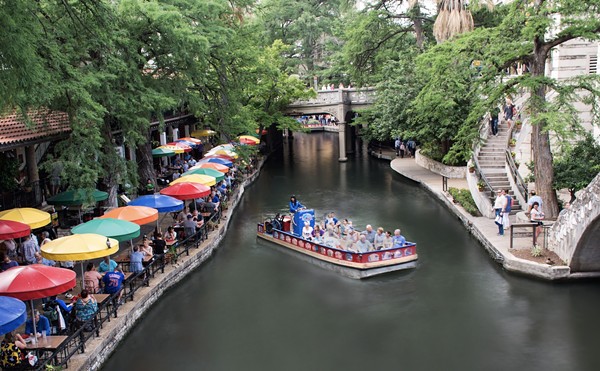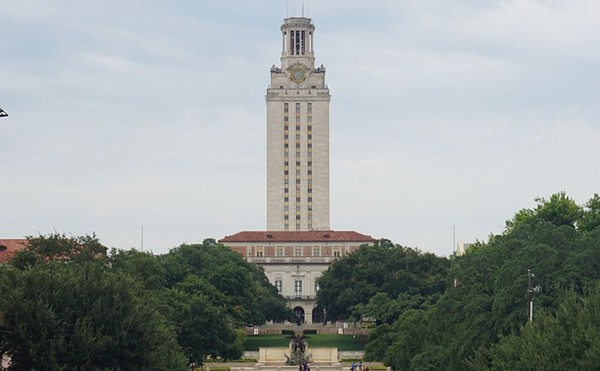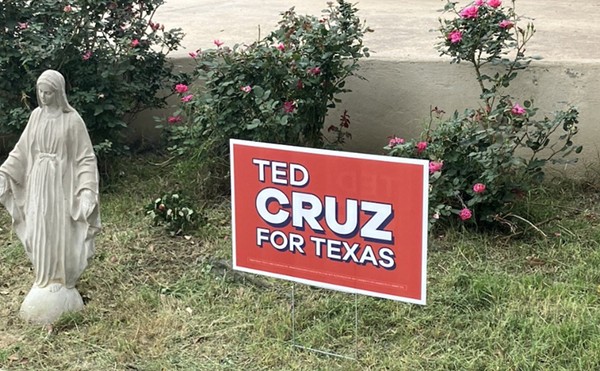 O’Keeffe’s “Blue I”: And the price is ... $3,008,000. Courtesy photo. |
“Blue I” sold May 24 to an anonymous bidder for just over $3 million, a world auction record for a work on paper by the artist, according to Christie’s. Surprising? Not in this supernova art market, which regularly spawns new outlying planets in the “most ever paid for” universe: Gustav Klimt, Jasper Johns, Donald Judd, Andy Warhol, and more.
The reason you care: The painting previously belonged to the Tobin Endowment, aka the tail end of Robert L.B. Tobin’s estate, which once primarily benefitted the McNay, opera, and the theater arts, but now meets a variety of demands, from the Museo Alameda to the San Antonio library system, under the direction of Trustee Bruce Bugg. The Endowment is selling the much-coveted O’Keeffe along with 52 other works of art to raise the remaining $4 million of a $5 million pledge for the McNay Art Museum’s $50-million capital building campaign. `See “Bread or roses?” March 21-27.`
The McNay gambled when it made the trade. Director Bill Chiego says Bugg gave him a choice: The artwork, which perfectly complements the museum’s impressive Modern collection or the cash. The McNay took the money. “It was clear to me the institutional priority was getting this building built,” Chiego told the Current earlier this year. The board of trustees may feel less sanguine about the tradeoff now that they look like an illustrated version of that old aphorism: to know the price of everything, and the value of nothing.
The sale of the O’Keeffe and Charles Demuth’s “Study for Poster Portrait: I Saw the Figure Five in Gold” (which went for $216,000, at the lower end of its estimated sale price) brings the endowment close to its total fundraising goal, with plenty of auctioning left to go. We’re eager to hear what Bugg plans to do with any overage. Perhaps an art-purchasing fund for the McNay?
Speaking of letting the market decide: The media Sturm und Drang over the legislature’s attempt to place a moratorium on toll roads — and anti-toll-road poster child the Trans-Texas Corridor — has partially obscured a victory for property-rights advocates: the passage of a bill that significantly restricts the use of eminent domain.
“`H.B. 2006` does not address the corridor directly,” says Texas Farm Bureau PR cultivator Gene Hall, but it makes it more difficult for the government to take private property for any use. And more expensive. The bill requires public hearings and recorded votes to initiate condemnation proceedings, and provides safeguards to ensure that governments first make good-faith offers to property owners — “what a willing seller would pay a willing buyer” says Hall.
Kelo v. City of New London, the 2005 eminent-domain case in which the Supreme Court ruled that government entities could take land on behalf of private developers if the purpose was to increase public tax revenues caused cash-register noises to sound in local officials ears every time they see a “blighted” neighborhood. Texas’s 79th lege passed a bill that summer that said eminent-domain powers could only be used for public projects (including libraries and parks) and the Trans-Texas Corridor, but critics argued it was inadequate. H.B. 2006 closes many of the remaining loopholes. Local governments can only designate blighted areas one property at a time, rather than use one neglected property to tag an entire area for “urban renewal.” The new law also requires non-governmental entities that are authorized to use eminent domain to comply with open-record requests from landowners, and provides penalties if a court finds the government didn’t make a bona-fide offer before initiating condemnation proceedings. After all, you don’t want to sell yourself short just because you think someone’s got you over a barrel.

















